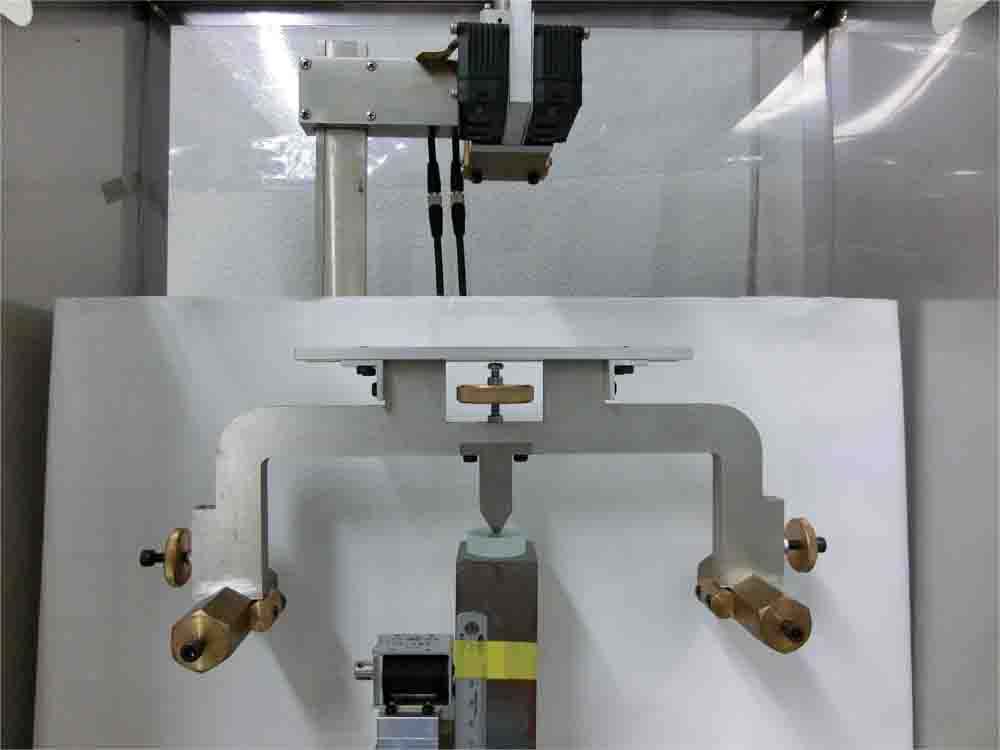|
ハーバート硬さ試験機の改良と応用に関する研究 |

|
|
ハーバート硬さ試験機は1923年に英国のHerbert.E.G.が考案したヤジロベ−型の硬さ試験機である.ハーバート硬さ試験機をFig.1に示す.試験機を測定対象上で揺動させ,その揺動の減衰状態から硬さを測定する.ハーバート硬さ試験機はドリルエッジのような特殊形状に直接適応可能であることに加え,既存の硬さ試験とは異なり金属材料および非金属材料にも適応可能な有用な試験機である.しかしながら,測定結果および測定方法の検討が不十分なためこの試験機の実用性は不明である.本研究は,ハーバート硬さ試験機を工業的に利用できる試験機するために実施する. |
|
F.Y.2016 |
|
Herbert hardness tester is a tester of an inverted pendulum type and can measure the hardness of various types of materials and shapes. We can easily evaluate the hardness of a special shape specimen anywhere using the damping hardness obtained by Herbert hardness test. Hardness of flat specimen was only evaluated with the Herbert hardness tester on the conventional study. In order to use the Herbert hardness tester in the wide industrial field, following three topics are carried out: (1) We attempt the measurement of the damping hardness of a vegetable knife, (2) We attempt the measurement of the damping hardness of a pointed carver, (3) We attempt the estimation of the stress-strain diagram using damping hardness. Conclusions are as follows: (1) damping hardness of a vegetable knife can be measured, (2) damping hardness of a pointed carver can be measured, (3) a stress - strain diagram can be estimated for only cyclic strain softening material using damping hardness. ↑ Return to top |
|
F.Y.2015 |
|
The Herbert hardness tester is a tester of an inverted pendulum type. The damping hardness is obtained from swing motion of the tester on the specimen. This tester can measure hardness of any kinds of materials, however we should clarify knowledge about factors affecting damping hardness and application of damping hardness. In order to extend application of the Herbert hardness tester, following three topics are investigated: (1) relationship between damping hardness and work hardening property (n-value), (2) evaluation of hardness of a knife edge by the Herbert hardness tester and (3) evaluation of the second moment of area of thin-wall structure components using damping hardness. Conclusions are as follows: (1) damping hardness is correlated with n-value, (2) the hardness of a knife edge can be evaluated by the Herbert hardness tester and (3) It could be possible to evaluate the second moment of area of thin-wall structure components by damping hardness. ↑ Return to top |
|
F.Y.2014 |
|
A Herbert hardness tester is a pendulum hardness tester with a cylindrical indenter. The Herbert hardness is evaluated from the swing angle of the tester on a specimen. In this study, we research for the relations between Herbert hardness and tensile properties. We carry out the Herbert hardness test and tensile test on eight kinds of materials. Conclusions are as follows : (1)A strong correlation is shown between Herbert hardness and tensile properties. (2)Both damping hardness and flow hardness have a weak correlation with the work hardening properties. ↑ Return to top |
|
F.Y.2013 |
|
An improved Herbert hardness tester is a typical pendulum hardness tester with a cylindrical indenter. Damping hardness is measured by swing of the Herbert tester on the specimen. The damping hardness is equal to the damping factor. In this study, we investigated relationship between the damping hardness and mechanical strength properties of metal. Also, we investigated validity of the detection of the damping hardness by the image analysis. In addition, we investigated application to CFRP on the Herbert hardness tester. Conclusions are as follows: (1) Damping hardness has a strong correlation with ultimate tensile strength and 0.2 % proof stress. (2) Damping hardness is obtained using image analysis. (3) We would suggest that damping hardness can evaluate the state of the surface of CFRP. ↑ Return to top |
|
F.Y.2012(B4) |
|
The Herbert hardness tester is a typical pendulum hardness tester. The hardness is measured by swing of the tester on the specimen. We call this hardness “Damping hardness”. The damping hardness is given from the damping factor of a swing angle-time curve observed. In this study, make a comparison between the damping hardness and Vickers hardness. In addition, examine the influence of indenter radii, swing cycle, surface roughness of specimen and surface with oil of specimen on damping hardness. The damping hardness and the Vickers hardness have linearly correlation. The damping hardness increased with increase indenter radii, swing cycle and surface roughness of specimen. The oil on surface of specimen is increased the damping hardness in high hardness specimen. ↑ Return to top |